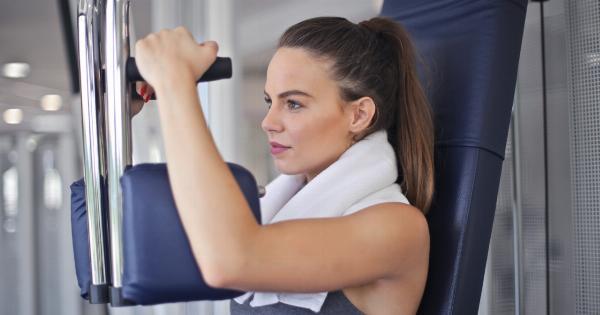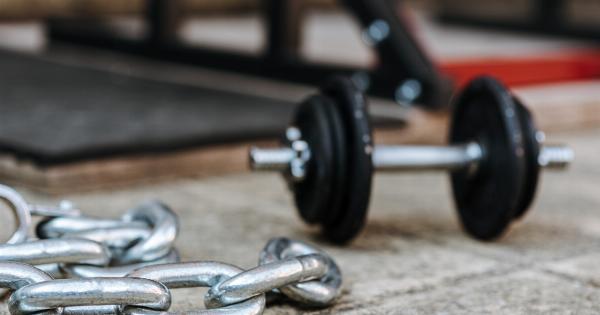The title “Breasts are Moving Faster than the Speed of Light” may conjure up images of science fiction or a bizarre phenomenon.
While it is true that breasts do not actually move faster than the speed of light, there are certain interesting facts and circumstances surrounding this topic that are worth exploring.
The Science of Breast Movement
Breasts are composed primarily of glandular and fatty tissues, which are supported by connective tissues known as Cooper’s ligaments.
During physical activities such as running or jumping, breasts experience a natural movement caused by the forces acting on them.
The movement of breasts during exercise is influenced by various factors such as breast size, elasticity of the skin, and muscle strength.
Larger breasts may experience more significant movement due to their weight, while smaller breasts may be comparatively less affected.
The rate of breast movement during exercise can vary from person to person.
While it is an intriguing concept to imagine breasts moving at the speed of light, it is important to understand that breast movement occurs within the limits of human physical capabilities.
Effects of Exercise on Breast Health
Regular exercise has numerous health benefits, and breast health is no exception.
Engaging in physical activities strengthens the pectoral muscles, which can provide better support to the breasts, potentially reducing excessive movement during exercise.
Exercise also helps in maintaining overall body weight, which can have an impact on breast size. Being overweight or obese can increase breast size, leading to more significant movement during physical activities.
Maintaining a healthy weight through exercise and a balanced diet can help mitigate this effect.
Furthermore, exercise promotes blood circulation and lymphatic drainage, which can contribute to breast health.
Improved blood flow ensures essential nutrients and oxygen reach the breast tissues, while effective lymphatic drainage helps eliminate toxins and waste products, reducing the risk of breast-related health issues.
Choosing the Right Sports Bra
The importance of wearing a well-fitting sports bra during exercise cannot be overstated. A sports bra provides additional support to the breasts, minimizing movement and reducing discomfort or potential long-term damage to Cooper’s ligaments.
When selecting a sports bra, it is crucial to consider factors such as adequate breast coverage, proper fit, and the level of impact anticipated during physical activities.
Sports bras are typically designed to provide varying levels of support, ranging from low-impact activities like yoga to high-impact activities such as running or vigorous aerobics.
It is advisable to get professionally fitted for a sports bra, as well-fitting attire ensures optimal support and comfort. A supportive sports bra not only reduces breast movement but also boosts confidence and enhances overall exercise experience.
Common Concerns and Solutions
Some individuals may experience discomfort or pain during exercise due to breast movement. Fortunately, there are several solutions to address these concerns and make physical activities more enjoyable.
1. Investing in a High-Impact Sports Bra: For those with larger breasts or engaging in high-impact activities, a sports bra specifically designed for such activities can provide maximum support and minimize movement.
2. Layering Sports Bras: Wearing multiple sports bras or a high-support bra with a compression-style bra can offer additional support and control breast movement effectively.
3. Avoiding Vertical Movement: Some sports bras are designed with compression features that restrict vertical movement. Opting for these bras can help reduce discomfort caused by breasts bouncing up and down during exercise.
4. Applying Anti-Chafing Products: Applying anti-chafing creams or lotions to areas prone to friction or irritation can help prevent discomfort and skin-related issues caused by breast movement.
Supporting Breast Health
Beyond the realm of exercise, there are additional measures individuals can take to support breast health and minimize movement in everyday life.
1. Maintaining a Healthy Posture: Good posture and engaging the core muscles can contribute to improved breast support and minimize excessive movement.
2. Wearing a Properly Fitted Bra: A well-fitted everyday bra that provides adequate support is essential for minimizing breast movement during daily activities.
3. Avoiding Excessive Weight Gain or Loss: Significant weight fluctuations can influence breast size and contribute to increased movement.
Maintaining a stable body weight reduces the degree of breast movement experienced during physical activities.
Conclusion
While the notion of breasts moving faster than the speed of light is purely fictional, understanding the factors influencing breast movement during exercise is important for both comfort and breast health.
Engaging in regular exercise, wearing appropriate sports bras, and implementing supportive measures can reduce breast movement, enhance overall well-being, and contribute to long-term breast health.





























